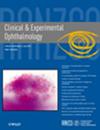Reactivation of stable neovascular age-related macular degeneration following treat-and-extend regimen discontinuation
Abstract
Background
To describe the incidence and pattern of reactivation of neovascular age-related macular degeneration (nAMD) following successful treatment with treat-and-extend intravitreal anti-vascular endothelial growth factor therapy.
Methods
Consecutive patients with treated nAMD who did not require further treatment over a 6-month period and who attended their 3-monthly optical coherence tomography monitoring clinic in Moorfields Eye Hospital from 1 November 2019 to 31 January 2020 were included. Patients with diagnoses of macular neovascularization other than AMD, and patients with incomplete data were excluded. Baseline demographics recorded were age, sex, race, laterality, cause of macular neovascularization, drug, number of injections, and duration of treatment. Date, setting, symptoms, and time to retreatment were collected among patients with disease reactivation.
Results
The medical records of 286 patients were included. Most patients were female (64.3%), white (68.18%), and were receiving aflibercept monotherapy (55.2%). Mean number of injections at baseline was 17.79 ± 11.74 (range 3–62) with a mean treatment duration of 39.47 ± 30.68 months (range 2–139). Reactivation of AMD was identified in 32.2% of cases with 87% of recurrences identified via scheduled visit. The most common symptom was blurring of vision in 44.6%, while 39.1% were asymptomatic. Mean time from baseline to retreatment was 29.37 ± 22.40 months (range 5–104), with 20.7%, 73.9% and 88.04% of these patients requiring retreatment within 1, 3, and 5 years, respectively.
Conclusions
Despite prior treatment with no reactivation in 6 months, 32.2% reactivate, 73.9% of which within 3 years. A significant proportion, 39.1%, reactivated without symptoms necessitating regular monitoring in the first 5 years.

 求助内容:
求助内容: 应助结果提醒方式:
应助结果提醒方式:


